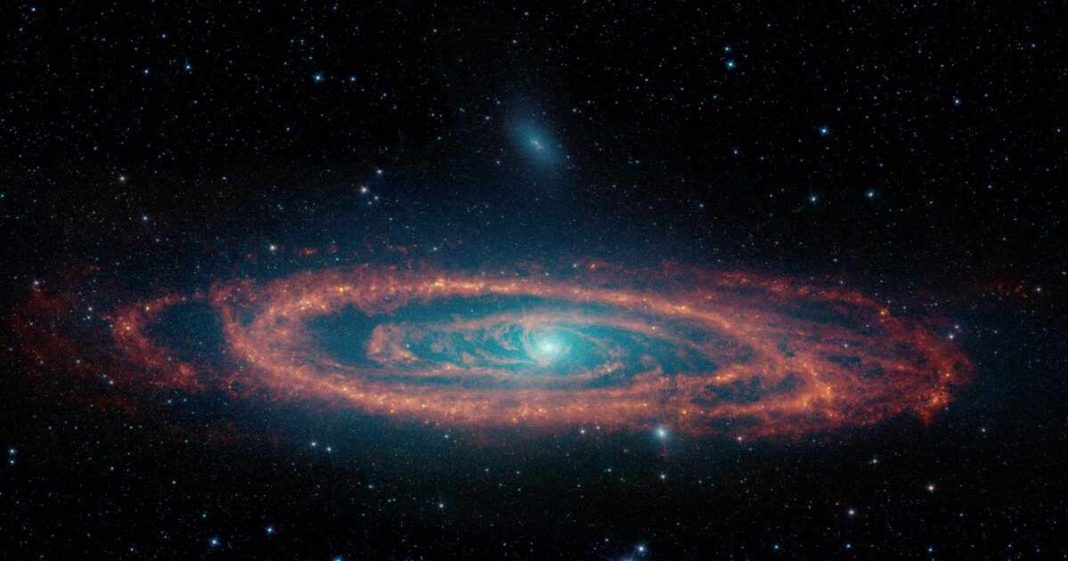Scientists have long been captivated by the enigmatic nature of supermassive black holes, those cosmic behemoths lurking at the centers of galaxies, including our own Milky Way. Recent revelations from the now-retired Spitzer Space Telescope, alongside groundbreaking observations from NASA’s Hubble Space Telescope, Chandra X-ray Observatory, and the latest marvel, the James Webb Space Telescope (JWST), are shedding new light on these celestial giants and the cosmic feasts they host.
Spitzer’s Glimpse into the Heart of Andromeda
A study published in the Astronomical Journal, featuring insights gleaned from the Spitzer Space Telescope, revealed a mesmerizing sight: large streams of gas and dust spiraling toward a supermassive black hole nestled at the heart of the Andromeda galaxy, located 2.5 million light-years away. Contrary to previous assumptions, the study unveiled that these cosmic giants partake in their meals quietly, feeding on colossal streams of gas at a steady pace. This feeding frenzy manifests as fluctuations in brightness akin to water swirling down a drain, as described by NASA scientists. By revisiting archival data spanning two decades, researchers discovered nuances overlooked in earlier observations, challenging conventional beliefs about how supermassive black holes dine on cosmic matter.
Read More: Scientists set to unveil first picture of a black hole
Peering into the Depths of the Cosmos with Spitzer and Hubble
In a collaborative effort between Spitzer, Hubble, and Chandra, astronomers embarked on an ambitious quest to survey the depths of the universe through the Great Observatories Origins Deep Survey (GOODS). Their endeavor uncovered a trove of celestial treasures, including elusive supermassive black holes previously concealed from view. While Chandra detected over 200 X-ray sources believed to be supermassive black holes, Hubble’s keen eye unveiled optical galaxies surrounding most of these cosmic giants. However, seven enigmatic X-ray sources remained devoid of optical counterparts, sparking intrigue and speculation among astronomers. Enter Spitzer, with its infrared prowess, which swiftly unraveled the mystery, revealing the hidden galaxies cloaked in darkness and dust, pushing the boundaries of cosmic exploration.
Read More: Scientists discover a supernova explosion that affected the ozone layer
The James Webb Space Telescope, with its unparalleled sensitivity and resolution, embarked on a groundbreaking mission to peer back in time, capturing faint light from stars surrounding ancient supermassive black holes. Observations conducted by a team from MIT provided compelling evidence that these cosmic titans grew from “heavy seed” black holes, challenging conventional theories about their rapid formation. By meticulously analyzing JWST data, researchers discerned the distinct signatures of starlight amid the brilliance of quasars, offering tantalizing insights into the cosmic dance between galaxies and the supermassive black holes that inhabit their cores.














